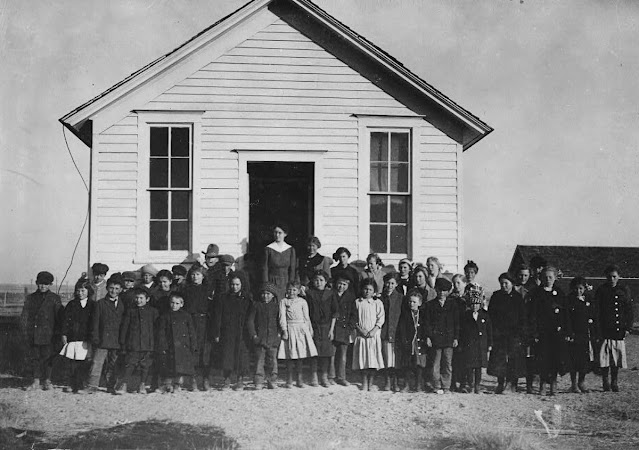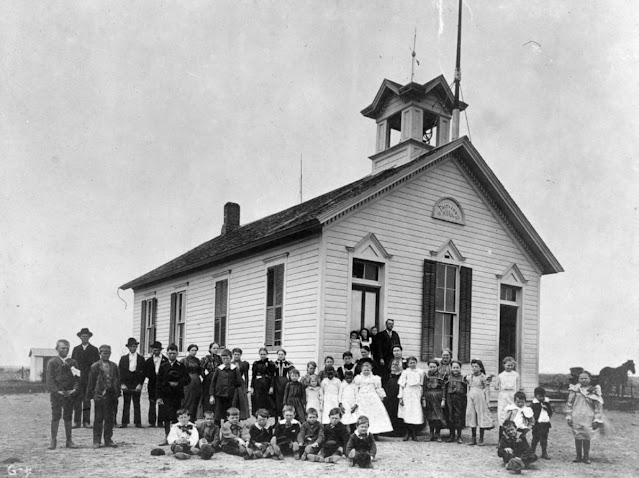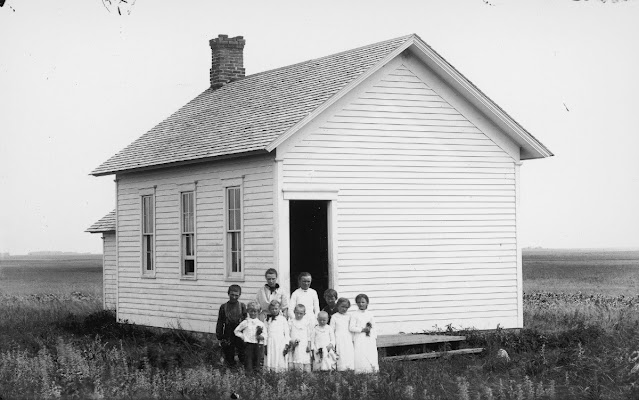One-room schoolhouses, or One-room schools, have been commonplace throughout rural portions of various countries, including Prussia, Norway, Sweden, the United States, Canada, Australia, New Zealand, the United Kingdom, Ireland, Portugal, and Spain. In most rural and small town schools, all of the students meet in a single room. There, a single teacher teaches academic basics to several grade levels of elementary-age children. Recent years have seen a revival of the format. One-room schoolhouses can also be found in developing nations and rural or remote areas undergoing colonization.
In the United States, one-room schools were used only in rural areas. As late as 1930 half of the nation’s school children lived in rural areas. About 65% of the nation’s school buildings were one-room, and they were attended by 30% of the rural students. Consolidation rapidly reduced their numbers in the 1920s and 1930s. They had a place in popular folklore, with one fondly recalling a, “little house, on a little ground, with a little equipment, where a little teacher at a little salary, for a little while, teaches little children little things.” A less romantic view by sociologist Newell Sims reported on the majority of rural schools of all sizes in the 1930s:
The utter inadequacy of the majority is the striking feature of rural school buildings. They are poorly situated, often without any grounds, or, with grounds that are grassless, treeless and beautyless. As structures they are poorly planned, poorly lighted, poorly heated, poorly seated, poorly equipped or virtually unequipped either for comfort or education, and poorly kept. Drinking water is not usually supplied. Sanitary arrangements and toilet facilities are as likely to be entirely lacking as to be provided in even a half-way decent manner.
Teachers in one-room schools were usually daughters of nearby farmers. They were recent graduates and spent a couple of years teaching before they quit to get married. The teachers were poorly prepared and needed to coach children of all ages/grades within one room.
A typical school day was 9 a.m. to 4 p.m., with morning and afternoon recesses of 15 minutes each and an hour period for lunch. Transportation for children who lived too far to walk was often provided by horse-drawn kid hack or sulky, which could only travel a limited distance in a reasonable amount of time each morning and evening, or students might ride a horse, these being put out to pasture in an adjoining paddock during the day. In more recent times, students rode bicycles.
The vast majority of one-room schools have been torn down; a few were converted for other purposes. However, in a handful of rural communities, such as Mennonites and Amish, one-room or two-room schools survived longer. As of 2005, almost 400 one-rooms schools still operate in the United States.











































.jpg)



0 comments:
Post a Comment